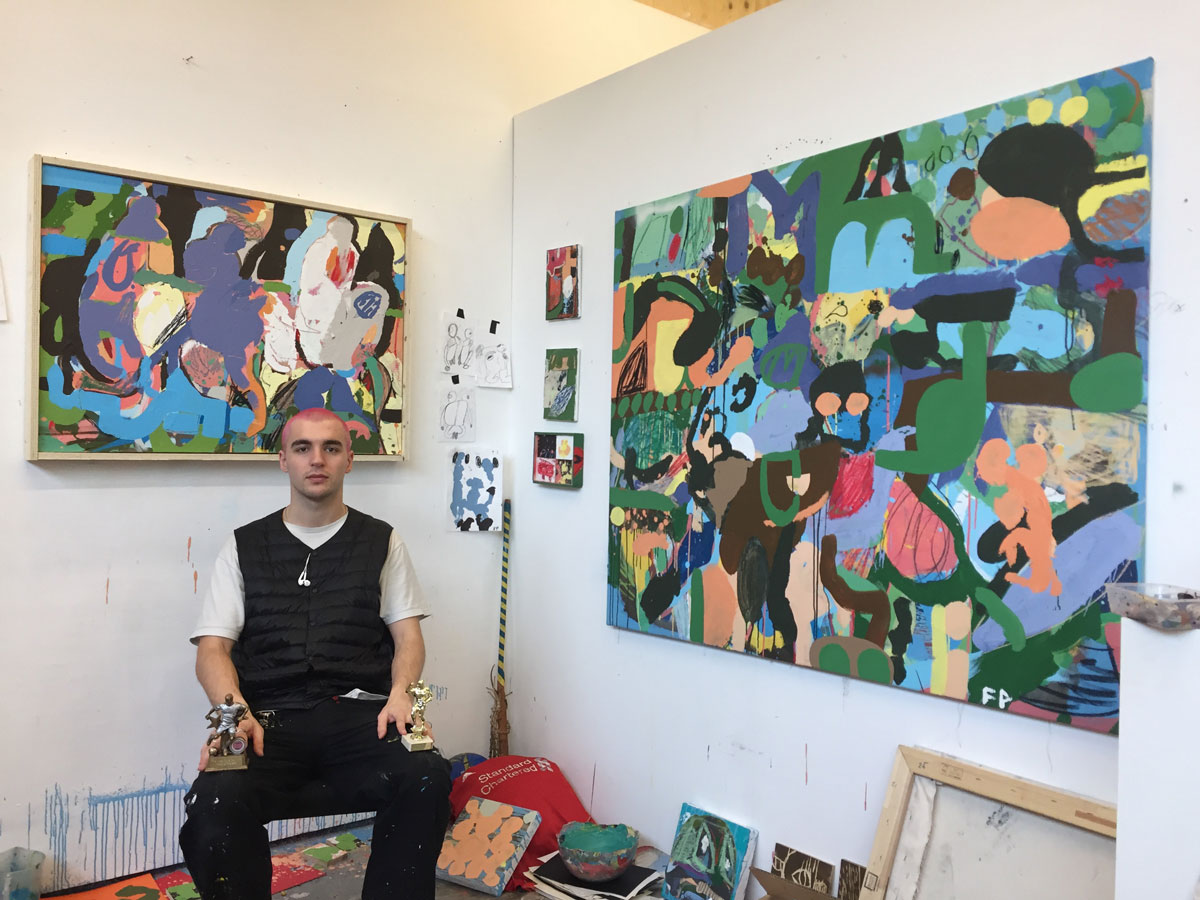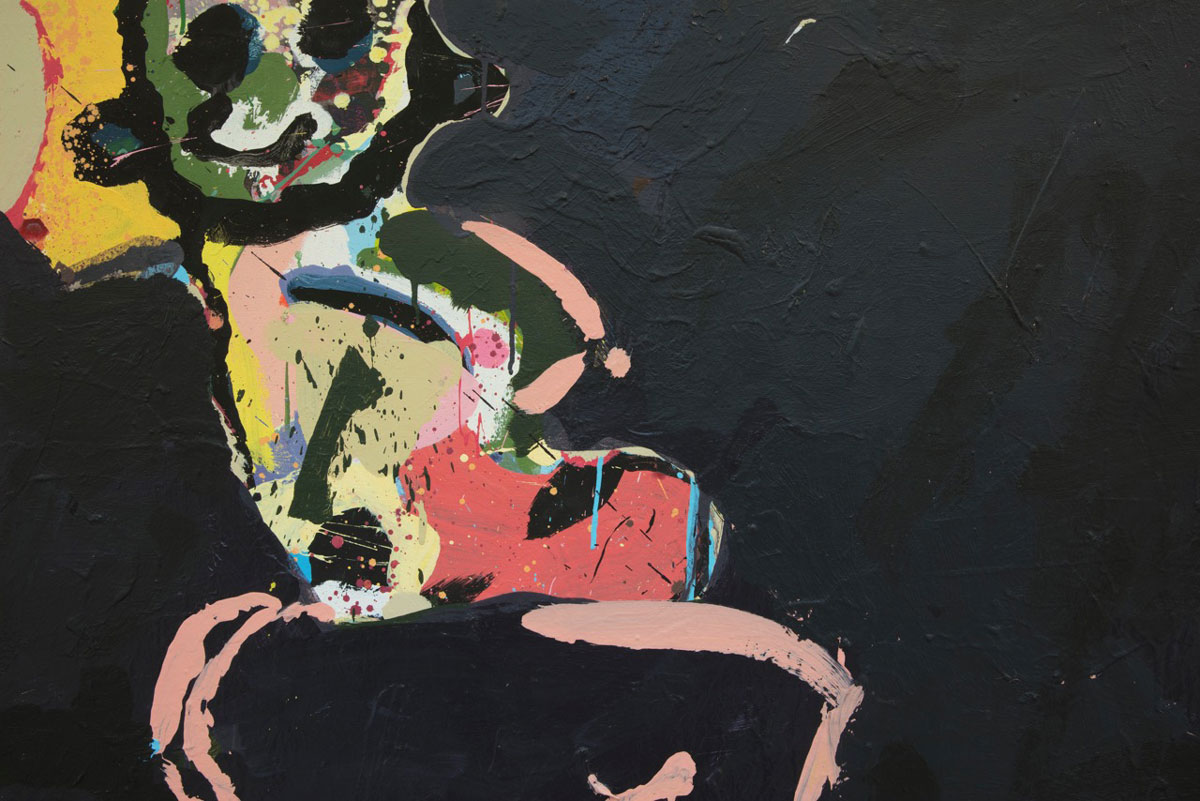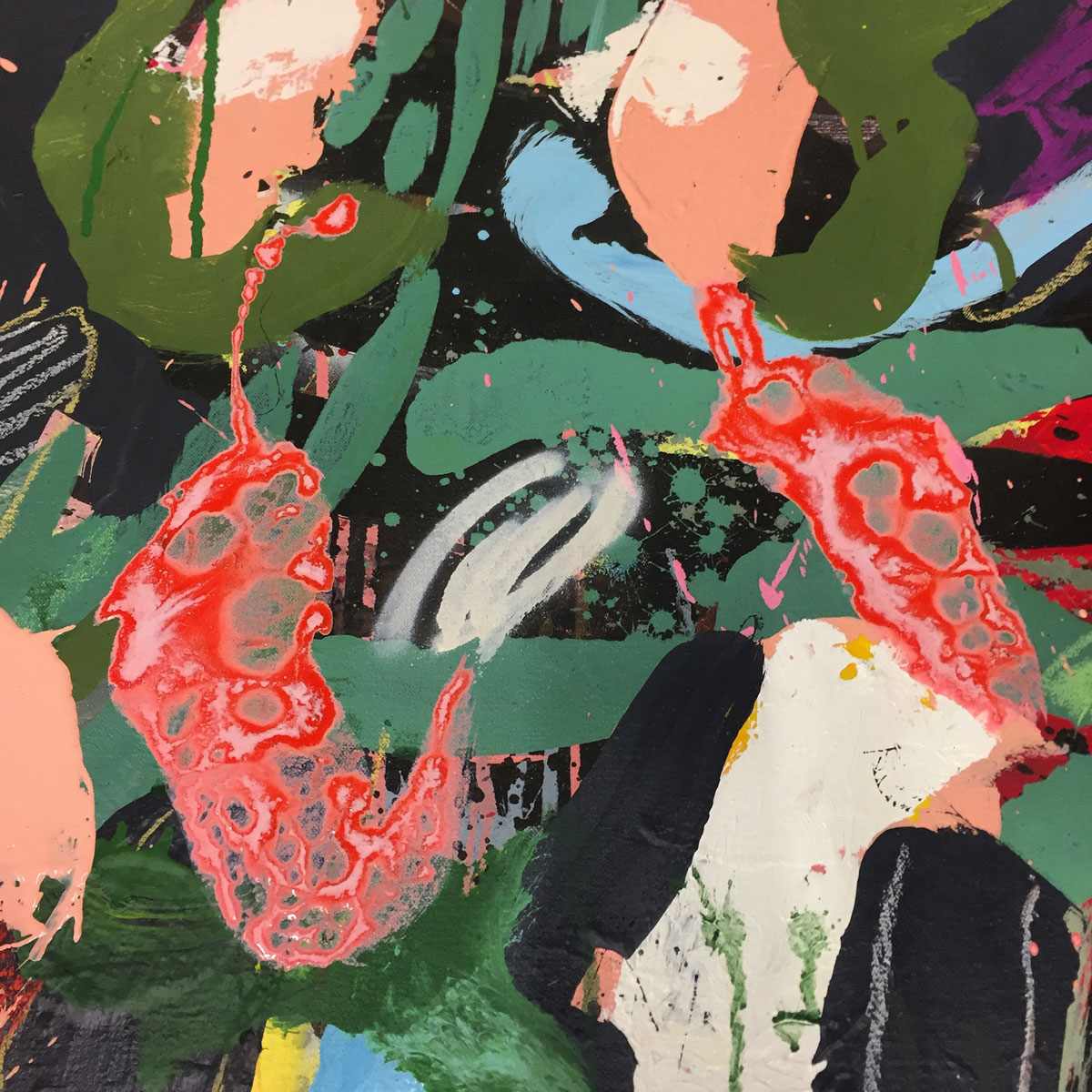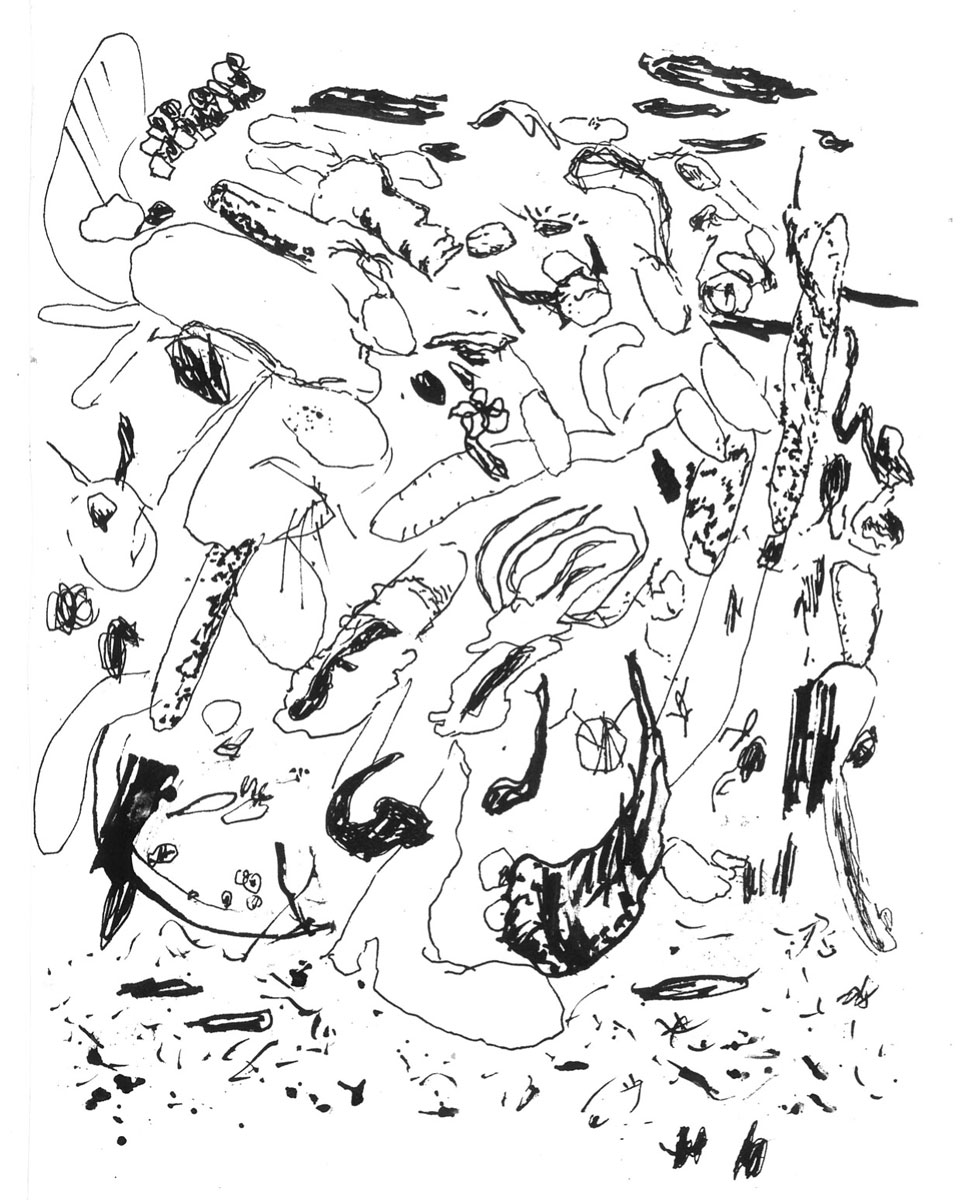“Painting has probably made me cry a few times.”

According to good old Wiki, Fergus is a common Irish or Scottish male name derived from Scots Gaelic, meaning “the angry or the wrathful one” (aka agitated Normans with high levels of testosterone). And while Fergus Polglase has the face of an angel, his hands exhibit the talents of a higher power. He paints, draws, crafts, splatters and scribbles, producing exceptionally mesmeric reveries on XL-sized canvases. He is inspired by the works of Quentin Blake, and particularly drawn to the baddies in Roald Dahl stories—because “the good guys tend to be a bit boring most of the time”.
Describing his work as “expressive but controlled”, calculating balance in energy, shape and colour, Polglase often embeds a “direct link to something deeper” in his visual narrative. “Painting has probably made me cry a few times” he confesses—for instance, one of his paintings is titled Strong Bones and came about after witnessing a rugby player injure himself in action. “It was so hard to watch and the image sometimes replays in my mind.” If he wasn’t about to graduate from CSM, this talent might have joined the army, or worked with animals or plants. Does the Garden of Eden have a vacancy, we wonder?

What are the characteristics and clichés of a Nottinghamshire upbringing?
One thing was being far away from people. All my friends from school were long drives away, it was pretty lonely living in the countryside. It was fine for my friends because they all had playstations and things. I have never had a game console, so l have never been into staying inside staring at a screen, I had to keep moving and doing something. I would go and explore the fields and skate around, and when it rained I would just draw and read comics.
What was it like to develop your craft in Falmouth compared to the hustle and bustle of Granary Square?
Falmouth was really amazing and was great for developing my art. The light down there is incredible compared to London, and I paint so much better when I’m relaxed, which Falmouth definitely helped with. However, I did feel really uninspired at times, and really wanted to see some art that wasn’t just boats in a seaside gallery. That’s why I appreciate London, there’s always something to go and see or do, and it motivates me every day to make new work.
You use your own experiences in life to form your art; what’s the most personal and/or haunting story you’ve depicted on canvas?
I try to not go too personal and paint about my personal life or relationships directly, but certain things might crop up, such as titles or words in painting that would have a more direct link to something deeper. When I start a painting I don’t know where it’s going to go, so it could feel completely different at different stages. I try and keep my paintings focused on fictional stories or narratives that are inspired by things I’ve seen in real life. The most haunting would be about this guy’s arm I heard and saw snap in a rugby match, it was so hard to watch and the image replays in my mind sometimes. I called that painting Strong Bones.

What’s your most used colour or hue? If you had to paint with one shade, what would it be?
I don’t know the names of the colours, as I mix my own, but some kind of green or brown. They remind me of the earth and I end up using them in almost all of my paintings. Green is my favourite colour, it might be the Irish side of me… I want my paintings to feel like they have been through something, like they have grown like some kind of plant. I have even thought about growing my own trees to make stretchers from.
You’ve previously described yourself as “expressive but controlled”. Could you elaborate on this? What happens when you let go of control?
What I meant by this was that the marks I make are expressive and look expressive, but I have placed them there purposefully—I have thought about where the mark will go and what colour will be there, how transparent the paint will be, and how it will work with everything in the space. Even when I throw my paintbrush at a painting to make a mark, I don’t know what the mark will look like, but l have meant to do it. In terms of losing control I tend to do that when I make each painting. It’s very easy to get lost in a painting and take a painting too far, but you do need to step back, take control again and see what works and what doesn’t. I think completely losing control would have to involve some way of stopping me from making my own decisions and being completely separated from my body, my subconscious and perception of what looks good and what doesn’t.

Has a piece of art ever made you cry? Or even your own work?
I’ve never cried looking at a painting, but I feel like I had some kind of religious experience when I saw a Georg Baselitz a few years ago in Berlin. His work got me into abstract expressive painting. The painting was huge and I think I stood there for almost an hour or two. Also when I saw the Bonnard show at the Tate this past February I felt like I had just been relieved of all of the stress in my life, like I had a long holiday in the Mediterranean—I’d love someone to feel that way looking at my work. I remember seeing Eddie Martinez’s show at Timothy Taylor, I had never seen painting like that, I felt like running around the gallery. With my own work I almost cried the other day making my degree show painting, I spent a couple of months working on it then one evening I just overworked it and painted over pretty much everything in it, I was so upset and was in the worst mood…but now I love it! Its probably one of my favourite paintings I’ve ever made. Painting has probably made me cry a few times.
What advice would you give to an aspiring artist who’s afraid of the blank canvas?
Be inspired before you make your work—go and see an exhibition, read some books, do some drawings of things and take some photos. I find myself really lost and uncertain looking at a primed canvas if I’m not inspired.
If you weren’t an artist, what would have been your plan B?
Well the plan would have been the army, but I realized I didn’t want to be told what to do or hurt anyone, so the only things I have thought about would be working with animals or being a gardener.
If you and/or your work were a drink, what would the cocktail most definitely contain?
I would want it to look one way and then taste completely different, something that would surprise you. My paintings may look joyful and humorous, but they could be ironic and completely sinister, so something where you get surprised… a cocktail with all of those umbrellas and garnishes that tastes like petrol.

Words by Lawrence Harrison
Follow Fergus Polglase on Instagram